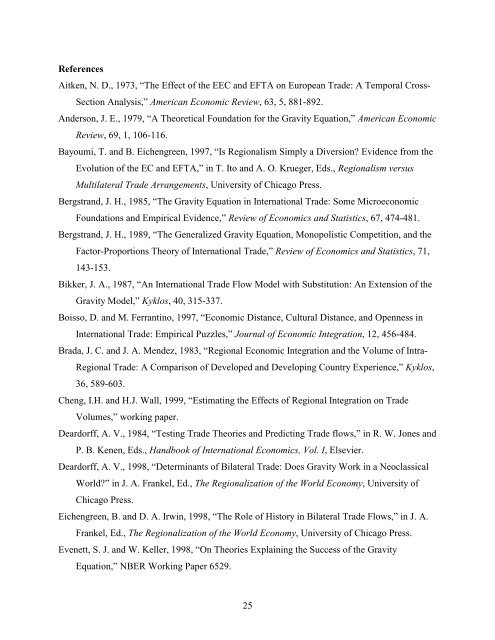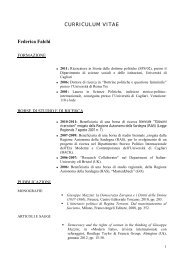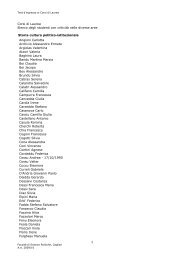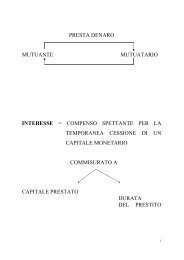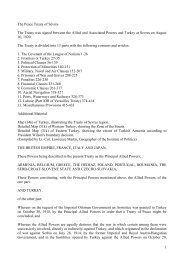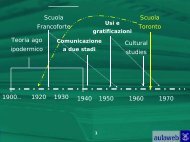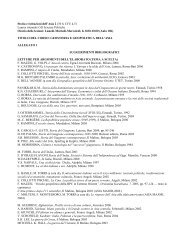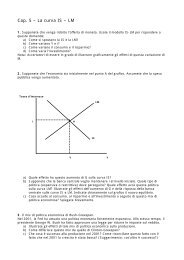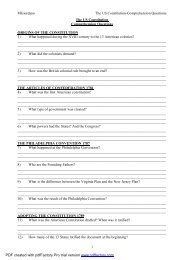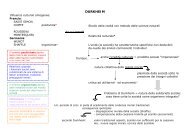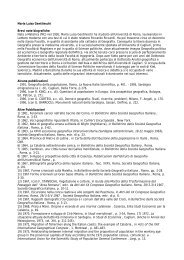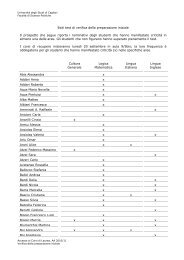Controlling for Heterogeneity in Gravity Models of Trade
Controlling for Heterogeneity in Gravity Models of Trade
Controlling for Heterogeneity in Gravity Models of Trade
Create successful ePaper yourself
Turn your PDF publications into a flip-book with our unique Google optimized e-Paper software.
ReferencesAitken, N. D., 1973, “The Effect <strong>of</strong> the EEC and EFTA on European <strong>Trade</strong>: A Temporal Cross-Section Analysis,” American Economic Review, 63, 5, 881-892.Anderson, J. E., 1979, “A Theoretical Foundation <strong>for</strong> the <strong>Gravity</strong> Equation,” American EconomicReview, 69, 1, 106-116.Bayoumi, T. and B. Eichengreen, 1997, “Is Regionalism Simply a Diversion? Evidence from theEvolution <strong>of</strong> the EC and EFTA,” <strong>in</strong> T. Ito and A. O. Krueger, Eds., Regionalism versusMultilateral <strong>Trade</strong> Arrangements, University <strong>of</strong> Chicago Press.Bergstrand, J. H., 1985, “The <strong>Gravity</strong> Equation <strong>in</strong> International <strong>Trade</strong>: Some MicroeconomicFoundations and Empirical Evidence,” Review <strong>of</strong> Economics and Statistics, 67, 474-481.Bergstrand, J. H., 1989, “The Generalized <strong>Gravity</strong> Equation, Monopolistic Competition, and theFactor-Proportions Theory <strong>of</strong> International <strong>Trade</strong>,” Review <strong>of</strong> Economics and Statistics, 71,143-153.Bikker, J. A., 1987, “An International <strong>Trade</strong> Flow Model with Substitution: An Extension <strong>of</strong> the<strong>Gravity</strong> Model,” Kyklos, 40, 315-337.Boisso, D. and M. Ferrant<strong>in</strong>o, 1997, “Economic Distance, Cultural Distance, and Openness <strong>in</strong>International <strong>Trade</strong>: Empirical Puzzles,” Journal <strong>of</strong> Economic Integration, 12, 456-484.Brada, J. C. and J. A. Mendez, 1983, “Regional Economic Integration and the Volume <strong>of</strong> Intra-Regional <strong>Trade</strong>: A Comparison <strong>of</strong> Developed and Develop<strong>in</strong>g Country Experience,” Kyklos,36, 589-603.Cheng, I.H. and H.J. Wall, 1999, “Estimat<strong>in</strong>g the Effects <strong>of</strong> Regional Integration on <strong>Trade</strong>Volumes,” work<strong>in</strong>g paper.Deardorff, A. V., 1984, “Test<strong>in</strong>g <strong>Trade</strong> Theories and Predict<strong>in</strong>g <strong>Trade</strong> flows,” <strong>in</strong> R. W. Jones andP. B. Kenen, Eds., Handbook <strong>of</strong> International Economics, Vol. I, Elsevier.Deardorff, A. V., 1998, “Determ<strong>in</strong>ants <strong>of</strong> Bilateral <strong>Trade</strong>: Does <strong>Gravity</strong> Work <strong>in</strong> a NeoclassicalWorld?” <strong>in</strong> J. A. Frankel, Ed., The Regionalization <strong>of</strong> the World Economy, University <strong>of</strong>Chicago Press.Eichengreen, B. and D. A. Irw<strong>in</strong>, 1998, “The Role <strong>of</strong> History <strong>in</strong> Bilateral <strong>Trade</strong> Flows,” <strong>in</strong> J. A.Frankel, Ed., The Regionalization <strong>of</strong> the World Economy, University <strong>of</strong> Chicago Press.Evenett, S. J. and W. Keller, 1998, “On Theories Expla<strong>in</strong><strong>in</strong>g the Success <strong>of</strong> the <strong>Gravity</strong>Equation,” NBER Work<strong>in</strong>g Paper 6529.25


